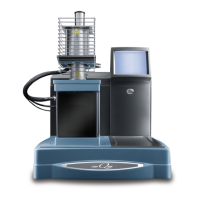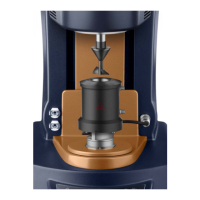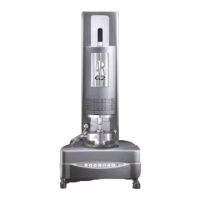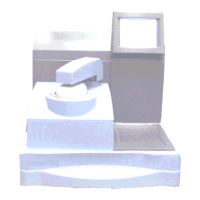TA I
NSTRUMENTS
TGA 2950 B–27
Hi-Res
TM
Option
Signature Analysis
For many materials it will not be possible to
separate overlapped transitions sufficiently to
allow quantitative analysis of weight change.
However, this does not mean that no useful
information can be gained from the TGA scan of
the material. It is frequently the case, particu-
larly in quality control work, that an exact
determination of sample composition is not
needed. Instead, the requirement is only to
identify which material of a group of known
standards the unknown sample most closely
resembles. Another usage is to identify lot-to-
lot variation from an acceptable standard. In
both of these cases the location, size, and shape
of the derivative of weight change peaks of the
TGA scan, or the weight curve itself, is used to
create a unique pattern or signature of the
sample material. Signature scans of standards
and the unknown material are then compared to
make the identification or accept/dont accept
decision.
Since the various components of a sample, when
run separately, usually decompose or evolve at
unique and reproducible rates and temperatures,
it is often felt that it should be possible to
determine exactly what is in an unknown
mixture by comparison to a library of known
TGA scans of the individual components.
Unfortunately, this usually does not work
because the various components of a mixture
typically interact with one another, so that the
resultant scan is unlike either material run
separately. The interactions can be chemical or
physical. Some examples are evolved gases
from one decomposition which slow or acceler-
ate the decomposition or evolution of another

